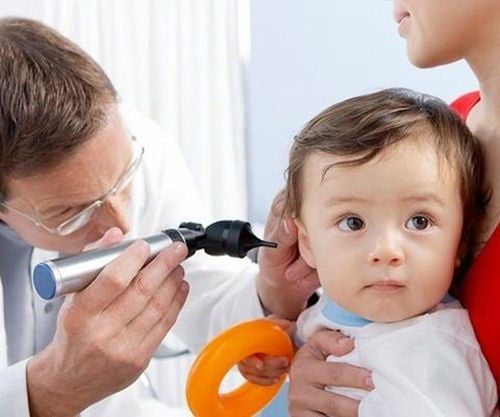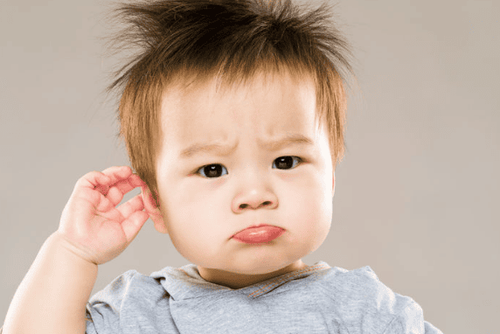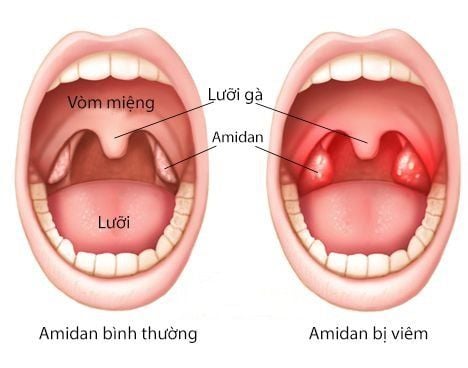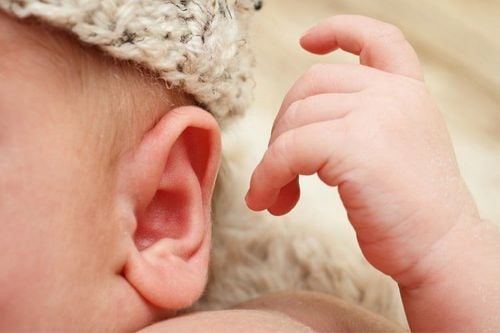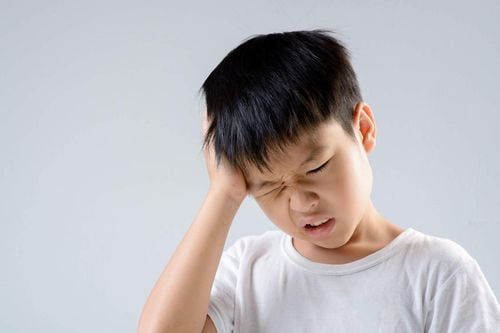This is an automatically translated article.
The article was professionally consulted by Dr. CKII Nguyen Van Thai - Department of Medical Examination & Internal Medicine - Vinmec Danang International General HospitalThe ear is an important sensory organ. In particular, the middle ear plays a role in perceiving and conducting sound. Chronic otitis media can cause hearing loss and sometimes the infection spreads to the brain, affecting life. Therefore, the knowledge about the disease helps to prevent and treat it early, avoiding dangerous complications.
1. What is chronic otitis media?
Chronic otitis media is when inflammation occurs in the lining of the middle ear for more than 12 weeks. At the same time, the disease does not or poorly respond to medical treatment. Consequences are tympanic membrane perforation and mucosal edema in the middle ear and mastoid.
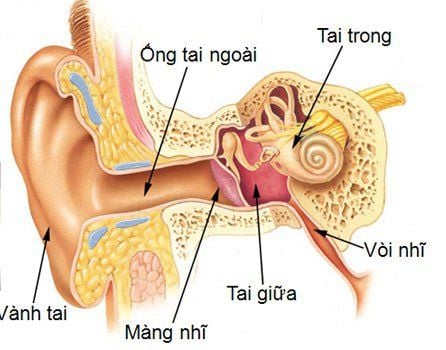
2. What are the causes of chronic otitis media?
Otitis media is usually caused by viral, bacterial or fungal agents. When the treatment of common colds is not effective, the eustachian tube is blocked, cannot drain the secretions in the tympanic cavity into the throat, mucus is stagnant in the middle ear, creating conditions for bacteria to invade, causing infection. complications of otitis media. In children, the eustachian tube is shorter, narrower, and slightly more horizontal than in adults, making it more susceptible to otitis media. Otitis media can also be caused by trauma or pressure. The favorable factors causing otitis media are due to the connecting mastoid structure, bacterial toxins and the patient's physical condition and location: malnourished children, debilitated adults, and weak resistance. reduced, thus prone to otitis media.
3. What are the manifestations and complications of chronic otitis media?
Chronic mucinous otitis media: purulent ear discharge intermittently, depending on the episodes of V.A. inflammation, pus discharges mucus, sticky, not rotten, has not affected hearing much. Chronic purulent otitis media: Often prolonged purulent discharge, green rotten solid pus, may have cholesteatoma, progressive hearing loss, may be dull pain in the head or heaviness in the head on the affected ear. Chronic otitis media with inflammation: High and prolonged fever, obvious infection status: poor sleep, thin, emaciated, debilitated. In the first stage, patients with chronic otitis media often have purulent ear discharge, pus draining mucus, sticky, not rotten. At this time, hearing function is not affected.
Later on, the condition of purulent ear discharge lasts continuously, solid pus, rotten green color. At the same time, hearing begins to diminish and there may be a dull ache in the head or heaviness in the affected ear.
In the late stages, hearing loss increases because of damage to the entire conduction tract, resulting in children with delayed language development or unable to speak if they have both ears. The ear pain is very severe. The pain point is located deep in the ear and spreads to the back of the mastoid or to the temples, causing headaches, ringing in the ears and dizziness.
If this condition persists, chronic otitis media will cause complications:
Complete hearing loss in one ear. Perforation of the eardrum does not heal permanently, the chain of bones is destroyed. When the infection spreads, nearby organs will also be affected, causing dizziness due to damage to the vestibular system, facial paralysis due to damage to the facial nerve, mastoiditis, encephalitis - meningoencephalitis, abscess epidural or brain abscess ... can lead to life-threatening. Tests showed that the eardrum was bulging, collapsed, or perforated during otoscopy. Audiometry noted decreased hearing. Chest X-ray or computed tomography computed tomography (CT) scan evaluates the spread of infection outside the middle ear, into the mastoid bone, and the meninges - brain.
4. How to treat and prevent chronic otitis media?
The goals of treatment for chronic otitis media are to control the infection, clear drainage in the middle ear, and restore hearing. Therefore, it is necessary to combine local care and treatment of the cause.Local treatment is the use of medications and ear cleaning. Make sure the ear canal is clean, cut the ear canal polyp if present, rinse with saline or hydrogen peroxide, then use ear drops. In some cases where the infection is difficult to control, surgery, drainage, and cleaning of the infection and abscess are required.
Besides, when the cause of the disease is not completely resolved, the disease will recur. If the cause is in the nose and in the nasopharynx, it is necessary to treat the rhinosinusitis, cut the nasal turbinate, cure the V.A ...
Prevention is to proactively prevent acute otitis media from turning into an ear infection. chronic by actively complying with drugs and antibiotics, considering early tympanic membrane puncture, ensuring good drainage, and avoiding stagnation. After exposure to the water environment such as swimming, washing hair, it is advisable to clean the ears, especially in young children. In addition, if you already have a chronic otitis media, you must have the right specialist treatment, monitor and detect complications early for timely resolution.
In summary, chronic otitis media is a consequence of other ENT diseases if not treated properly. The disease progresses steadily, both affecting the patient's ability to hear and speak, quality of life, and causing dangerous complications.
Please dial HOTLINE for more information or register for an appointment HERE. Download MyVinmec app to make appointments faster and to manage your bookings easily.





